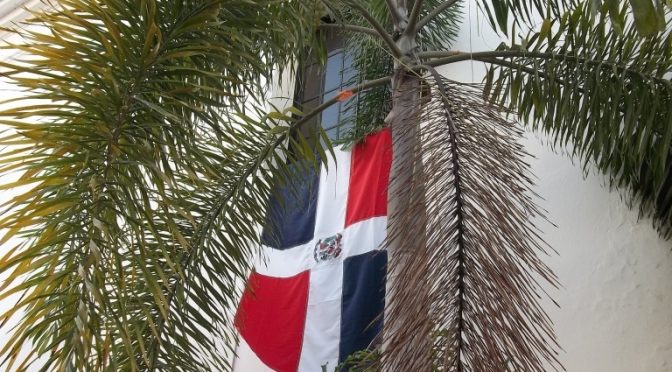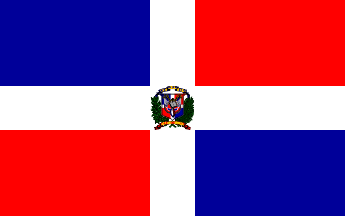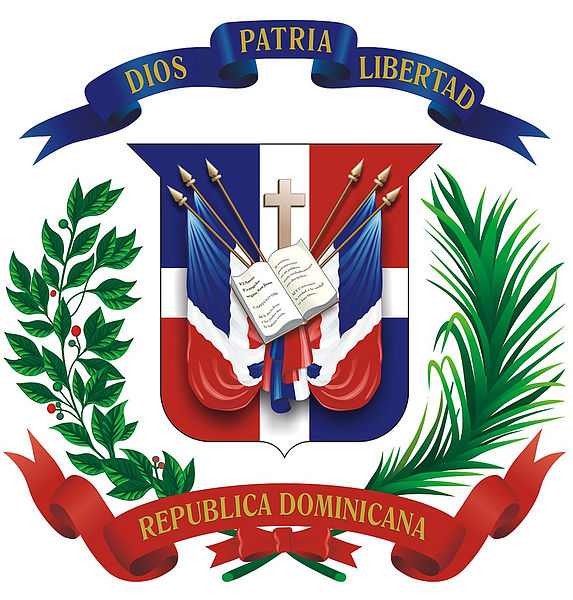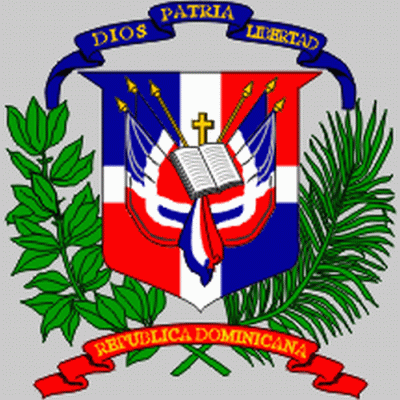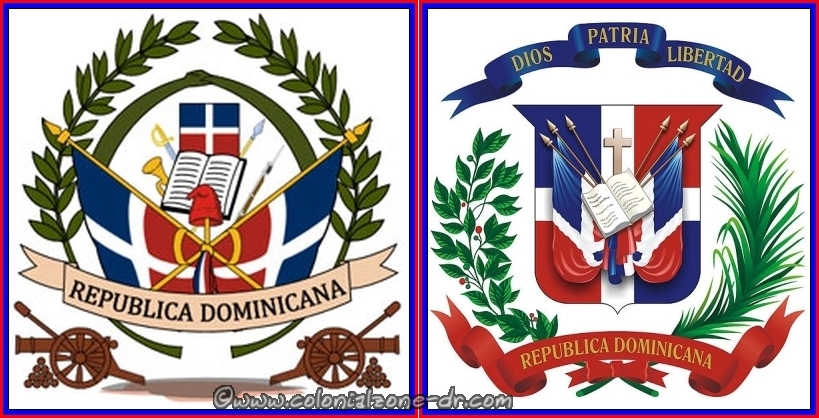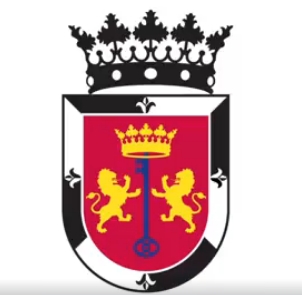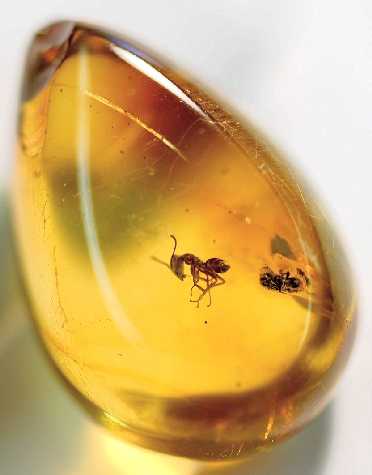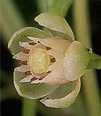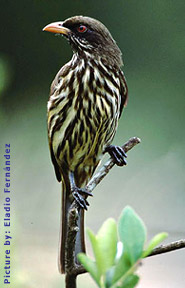Hurricane, Cyclone and Tropical Storm Information for Dominican Republic
Hurricanes (Huracán in Spanish) are devastating. Even if it is only a tropical storm it can be destructive. Here we hope to help you get prepared, endure and learn about hurricanes and how to survive them here in the Dominican Republic.
Juracán | Hurricane Season | Categories | Warnings | What To Do | Dominican Republic Emergency Center Pamphlet | Taking Care of a Pet | Water Vapor Map Links | Links to Hurricane Related Web Sites | Tropical Storm Jeannie
Juracán
The work hurricane originates from the Tainos, the original occupants of this island of Hispaniola. Jurakan or Juracán, a Taino God, controlled the power of the hurricane. Jurakan controlled the water and winds. When he was angry a hurricane would appear. He was a very angry deity and was not easy to appease, this is why there are so many storms.
The Spanish who came to the island changed the word from Juracán to huracán. The English adapted the word to become the word hurricane that we use today.
Hurricane Season
The hurricane season in the Caribbean begins on June 1st and finishes in November. In Dominican Republic the most active months for a cyclone are usually mid August through September. The island gets a serious brush on average every 5.03 years. It is averaged that we get a direct hit once every 22.66 years.
We have had 22 hurricanes that have impacted the coast from 1871 to 2004 of which 5 were very devastating.
*September 3, 1930: Huracán San Zenón (4,500 (some accounts say more than 8,000) lives lost. This was one of the top five most devastating Caribbean cyclones)
*October 3, 1963: Huracán Flora (400 lives lost)
*September 26, 1966: Huracán Inés (60 lives lost)
*August 31, 1979: Huracán David (1,000+ lives lost)
*September 22, 1988: Huracán Georges (247 lives lost)

There are a few more pictures of this Hurricane in the Old Pictures Collection – pictures 72,73 and 74)
Hurricane / Huracán, Cyclone / Ciclónica, Tropical Storm / Tormenta Tropical
A hurricane is a type of tropical cyclone, the general term for all circulating weather systems over tropical waters. The hurricane moves counterclockwise in the Northern Hemisphere.
Tropical Disturbance or Tropical Wave is a random mass of thunderstorms, very little if any, organized wind circulation.
Tropical Depression is an organized system of clouds and thunderstorms with a defined circulation and maximum sustained winds of below 39 mph (34 knots) or less.
Tropical Storm is an organized system of strong thunderstorms with a defined circulation and maximum sustained winds of 39 to 73 mph (34-63 knots).
Hurricane is an intense tropical weather system with a well-defined circulation and maximum sustained winds of 74 mph (64 knots) or higher.
The hurricane is categorized from 1 (weakest) to 5 (strongest).
*Category 1 winds measure between 74 and 95 mph..(64-82 knots)
*Category 2 winds measure between 96 and 110 mph (83-95 knots)
*Category 3 winds measure between 111 and 130 mph. (96-113
knots)
*Category 4 sustainable winds between 131 and 155 mph. (114-
135 knots)
*Category 5 Sustainable winds over 155 mph. (135 knots and
above)
Many hurricanes do weaken when and if they hit Dominican Republic because of its rough terrain. If a hurricane or Tropical storm does hit it is very devastating to the coastal areas. Obviously the wind, storm surge and rain are serious issues when we are hit with a hurricane. In the interior of the island heavy rainfall can cause mudslides, destroy mountain roads and homes.

WARNINGS
HURRICANE WATCH means there is a possibility that you could experience hurricane conditions within 36 hours.
You need to prepare just to be safe. Secure the boat, make sure you have all the items ready for securing your home and belongings. Better to be safe than sorry.
HURRICANE WARNING means that sustained winds of at least 74 mph are expected within 24 hours or less.
If this warning has been issued people should be actively preparing for the storm. Also deciding the safest location to be during the storm.
The hurricane season in Dominican Republic usually lasts from the beginning of June to the end of November, with August and September being the months of greatest storm activity. The hotels and resorts are usually prepared in case a storm does strike while you are visiting. They will inform their guests what is best and may evacuate you to another place if necessary. In general, the island is prepared for these storms and the tourists are usually well taken care of. If a hurricane has hit and you are planning a vacation here call ahead and make sure all is still ready for your arrival.
Many of the buildings in Dominican Republic are made from blocks, cement, iron rods, sand and gravel. These materials are generally weather-resistant. There are also many buildings and homes with tin roofs. These can become deadly when they become dislodged. Also, watch out for flying coconuts.
A large hurricane named Georges hit Dominican Republic on September 22, 1998. It was a category 3. The one before that was hurricane David in 1979. This was a category 5. Thus, the likelihood of getting caught in a hurricane is very small. But, when a hurricane does strike there is a good chance there will be destruction. The threat of a possible approaching hurricane should always be taken seriously and all necessary precautions should be taken.

What To Do In Case Of a Hurricane
If you are not in a major hotel or are living on the island and there is a hurricane threat here are a few things you can do to keep yourself safe. Please be prepared in advance. There are many web sites with complete lists on how to ready in the care of a tropical storm or hurricane. This is a short list of what to do so you can be prepared.
*Know the evacuation routes or know someone that knows the routes.
*Bring in things from the outside that can blow around. Anchor objects that cannot be brought inside.
*Secure windows with shutters, boards or tape.
*Stay inside, away from windows, skylights and glass doors.
*Keep a door or window open on the opposite side of the force of the wind to avoid a build-up of pressure that will suck your roof off.
*Fill up the gasoline tanks of all your vehicles.
*Fill baths and clean containers with water. Only drink water after it has been boiled for at least 5 minutes or after bleach has been added (eight drops/gallon) or use a water purifier.
*Make sure your propane gas tank supply is shut off at the time of the storm.
*Turn off electricity mains.
*Do not light candles or lighters until you are sure there are no escaped gas fumes close by.
*Make sure to have money because banks and ATMs may be temporarily shut down.
*Stay in a room without windows (bathroom, closet) if you are staying in your home.
*Do not use the telephone except for emergencies.
*If the eye of the storm happens to pass over your area, make sure not to venture outside, as the ferocious back end of the hurricane is still to follow. You should also be very careful what you do after a hurricane has passed. People are frequently killed after a hurricane passes due to electric shocks from fallen wires or lacerations.
Emergency Information Pamphlet

The National Weather Service, National Oceanic and Atmospheric Administration (NOAA) published a Hurricane Safety Guide to help all be prepared in case of a Tropical Storm. It is very complete and informative.
If you live on the island try and have a good plastic tote box filled with necessities just in case the worse happens.
*Food that doesn’t need to be cooked.
*Medicines.
*Basic utensils and can opener.
*Soaps and bathroom supplies.
*First aid supplies.
*Personal information.
*Flashlights, matches, candles and batteries.
*Sleeping gear.
*Camping stove and fuel.
*Clothing and rain gear.
*Some basic tools.
*Water.
*Whatever else you may need to live for a time to make it a bit more comfortable like a book or magazine.
Make sure, if you do decide to leave your home, that you give yourself plenty of time. Do so by heading inland until the storm has passed. If The Dominican Republic Emergency Operations Center / Centro de Operaciones de Emergencias (COE) (checking their web site click on ALERTAS) announces that your area is an evacuation area, it will tell you where the shelters are located and you should go immediately.

Caring For Pets
Remember you cannot take animals, alcohol, or firearms into a shelter. More information about securing your pet in case of a hurricane on the Dominican Dog Blog “Dog Care For Hurricane Season” (written in English and Spanish).
Vapor Maps
Hurricane water vapor and tracking map of the Caribbean area and The Dominican Republic – Hispaniola. You can watch the skies and see the clouds and many times the eye of the storm in real-time.
An amazing view from NOAA Star GOES-East Image Viewer Full Disk View – GeoColor. Here you can zoom into an area nd see some spectacular images of the earth.

Links to Hurricane related web sites
Civil Defence of Dominican Republic / Defensa Civil de República Dominicana
Tropical Tidbits is a great resource for maps and other critical storms information.
NOAA National Weather Service – National Hurricane Center – Tropical Prediction Center.
Hurricane Watch.org for up to the minute hurricane information
Tropical Hurricane Page and their complete weather page Wunderground.
Acqweather, complete information on the weather in Dominican Republic.SPANISH
Mike’s Weather Page, SpaghettiModels.com, has too much information and links to many weather pages. A great resource. He also has pages on FaceBook and Twitter with updated information.
Caribbean Hurricane Network up to date information on Caribbean weather.
Real Time Lightening Maps is a great resource to watch lightning strikes in the entire world.
Weathernerds provides weather data in a flexible, practical interface.
Link for information on Hurricane David at Hurricane City (born August 31-died September 4, 1974) hit Dominican Republic September 1, 1979. The storm’s highest wind speed was 174 MPH and was the strongest storm to hit the Dominican Republic since 1930.
Hurricane City has interesting information and a radio program to listen to when there are hurricanes that need reported on.
You can watch The Weather Channel Live Streaming Online at Live News Now.
What exactly is a hurricane? To learn more ….
Taking care of your pet during a hurricane.
Legend has it that former President Joaquín Balaguer made a pact with The Virgen de la Altagracia (who is Altagracia?) so the country would not have any large hurricanes…read more on the Myths and Legends page Balaguer and His Hat.

Tropical Storm Jeanne
This is a picture of Tropical Storm Jeanne when it briefly reached hurricane strength passing over Dominican Republic on September 16, 2004. This picture was taken at 1:55 p.m. Dominican time while the storm had sustained winds of 120 kilometers per hour (75 mph) with stronger gusts, and was moving west at 11 km/hr (7 mph). Jeanne was down graded to a tropical storm after its encounter with the island of Hispaniola.
Picture provided by Visible Earth at NASA.





